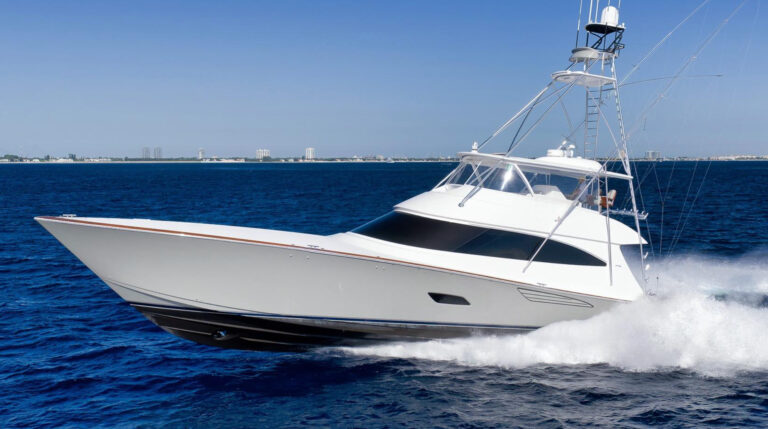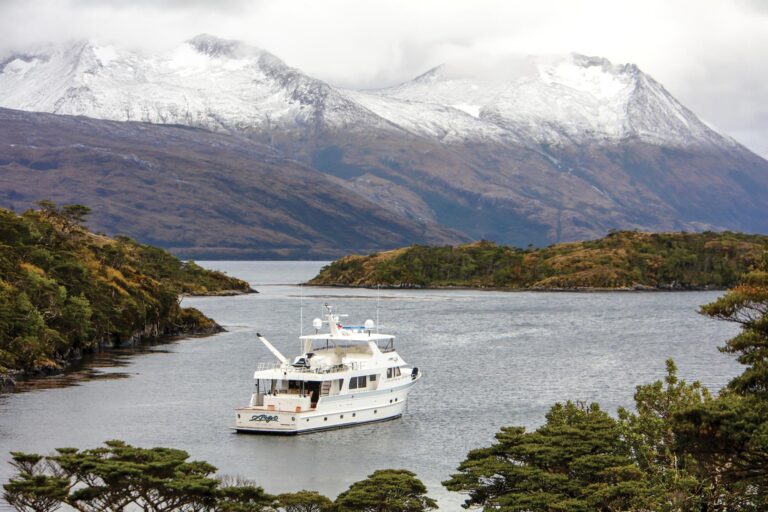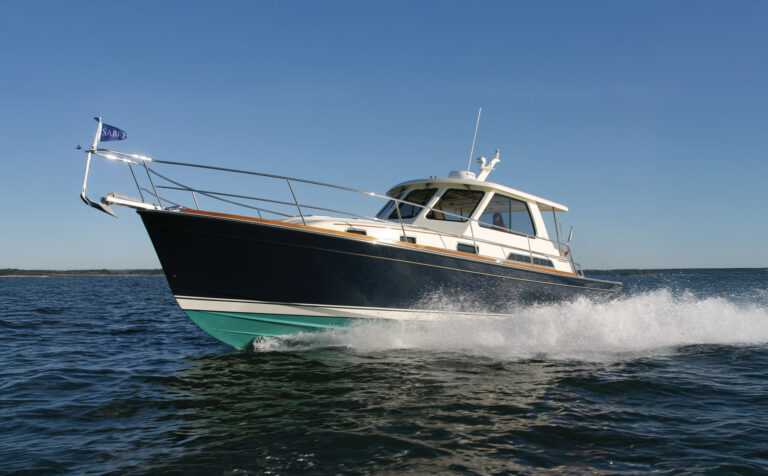After Editor-in-Chief George Sass, Jr., mentioned that the August issue would focus on “adventure” I couldn’t wait to dig into it—I love a good sea story. Then he suggested I might lend a hand in the effort. “Coyle, why don’t you share an exciting tale from Anhinga’s log?” As the Sass name appears in almost every log entry under “adventure” he should have known better. While we do our best to avoid the “A-word,” he’s the boss…let’s see, electrocution, pirates, and peril…hmm….yup… George was involved!
We were in Out Island rehab on Spanish Cay after a monthlong conch and Kalik tour of the Bahamas. Our first “deadline” in weeks was just 24 hours distant—a rendezvous with Sass at West End. Given Sass shares my blend of Irish/German genetics, cold beer and punctuality were paramount, so I restocked the cooler and planned an early start. The day began as most do in the Bahamian summer. Overhead a smattering of pleasant cumulus clouds pushed and shoved their way toward an inevitable afternoon brawl of cumulonimbus. I like to think of myself as an optimist, so given the uncertainty of Bahamian travel by land, sea, and air, I figured we had a 50/50 shot at making “deadline.”
To improve our odds I hoped to take a shortcut that is referred to by the indigenous population as Indian Cay Channel. Seasoned Out Island mariners know that “channel” is used loosely in the local vernacular and can mean any number of things, the least likely being a safe, properly marked fairway. Measuring about five miles long and 50 feet at its widest point, Indian Cay Channel is little more than a shallow impression in the coral. Navigation is best attempted when the lighting allows one to “read the water.” The channel’s “aids to navigation” consist of several rotting pilings that are spaced just far enough apart to be totally useless.
By late afternoon the sky had soured and it was time to commit to the channel or a long workaround to the north. With my thoughts on the “deadline” and the Kalik-filled cooler, I shifted gears from optimism to fatalism and we took a left at Great Sale Cay. I realized my mistake several hours later as we approached Indian Cay Channel. The horizon ahead had blackened and it was too late to turn back. The first 50 feet went well—other than the lightning. I sank into Anhinga’s helm seat and wiggled her autopilot knob with my big toe hoping to avoid electrocution. Then the rain hit so hard that I lost sight of our 13-foot Whaler in tow.
I found comfort in the thought that things couldn’t get much worse. I was idling blind in a windswept, unmarked channel no wider than a grocery-store aisle. I was armed with the latest electronic charts of the Bahamas gleaned from handwork sketched by the British Admiralty in the 1800s and my radar displayed a blob of clutter. Dragging a vintage Whaler through these parts is like pulling a lure in front of a marlin—but pirates? While not Jack Sparrow and the Black Pearl, two “good Samaritans” awash in the remains of a less fortunate Whaler appeared astern and were shouting and waving…”ya gotta turn mon…ya gonna hit da rocks!” I was briefly conflicted as I don’t trust my fellow man or electronics—I went with the electronics.
The power was out in West End, but we managed to find the rain-soaked rock in the twilight. Sass was waiting dockside having suffered an equally disturbing voyage by air from the U.S. Anhinga’s generator kept the lights on and the Kalik cold as we shared our tales, agreeing the “A-word” is highly overrated!









